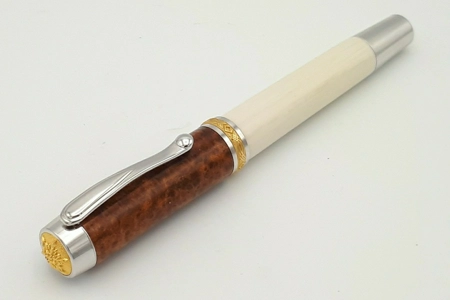“Take a pencil to write with on aeroplanes. Pens leak, “states the first of Margaret Atwood’s 10 rules of writing. “But if the pencil breaks, you can’t sharpen it on the plane, because you can’t take knives with you. Therefore: take two pencils.”
The ‘lead’ in a pencil isn’t in fact lead at all but graphite.* In the early part of the 16th century, the locals of Borrowdale in the Lake District (UK) found a huge heap of solid graphite. Now, at this time the sciences of chemistry and metallurgy were fledglings – and scientists gave the substance the name plumbago. That being the Latin for ‘lead ore’ – being as how they thought graphite was a form of black lead rather than a form of carbon.
And that folks, is why the people who fix our lead, water-carrying pipes are called plumbers. And why we talk about ‘lead pencils.’ Every day’s a school day! It’s curious though, that the lead pencil misnomer transcends languages throughout the world, with the word for a pencil translating as ‘lead pen’ in German, Gaelic and Arabic to name a few.
What did the Roman’s ever do for us?
There is though, another theory about how ‘lead pencils’ came to be so called. And that lies with the ancient Romans. They used styluses made from lead with which they scratched letters into tablets covered in a thin layer of wax. Now think of a modern pencil with an eraser at the top – well the lead stylus had a flattened end that the Roman writer used to smooth over – and erase – mistakes.
· Now a flip back to Mediaeval times, where scribes used a metal stylus, called a plummet, made of either lead or silver to rule lines onto parchment to keep the writing straight. The illustrator would also use a metal point to sketch out outlines of illustrations for painting in.
*The term graphite didn’t come into being until 1789, using the Greek graphein– meaning ‘to write.’ The word pencilis much older. It’s derived from the Latin Pencillusmeaning ‘little tail.’ That being a description of the small, ink brushes used for writing in the Middle Ages.
· The 1660s, in Nuremberg, Germany, saw attempts to make graphite sticks from powdered graphite. But the trade embargos of the Napoleonic wars in the late 18th century, forced the French to find another way to fill the core of a pencil.
· Nicholas Jaques-Conte, a French army officer, invented a kiln-fired mix of clay and graphite powder. A breakthrough that ended the British monopoly on quality pencil production.
Also a chemist, Conte refined his process, realising that varying the quantities of clay and graphite produced harder or softer pencils.
It’s typical for commercial pencil manufacturers to market 20 grades of pencil. They range from the softest: 9B, to the hardest: 9H. The most popular pencil is a HB – it lying midway between H and B. ‘H’ means hard and ‘B’ means black. So, the higher the B number … be … the more graphite gets left on the paper. You can also get an ‘F’ – fine point – a hard pencil for writing rather than drawing.
The pencil gets a case
The first people to hit on the idea of a pencil case were an Italian couple, Lyndiana and Simonio Bernacotti, back in the 1560s. They hit on the idea of encasing the stick of graphite in a hollowed-out juniper stick, thus, producing a flat carpenter’s pencil.
At length, the manufacturing process moved on and used a wooden casing, in two halves, carved out for the graphite stick and then glued together. A process that’s little changed over the last four centuries.
There you go – cutting a long story short – that’s how the pencil gets its lead! Or graphite to be precise. I’ll look at how mechanical pencils developed in another blog.
And it’s really quite the story - when you imagine how we’ve used pencils in planes, in space craft and submarines. Not forgetting the generations of schoolchildren who first learned to write with a pencil.












Nice History! Nice Read! I am aware of the history of the pencil also...thanks for sharing!
Thank you, glad you enjoyed it. I will be writing about the mechanical pencil next.